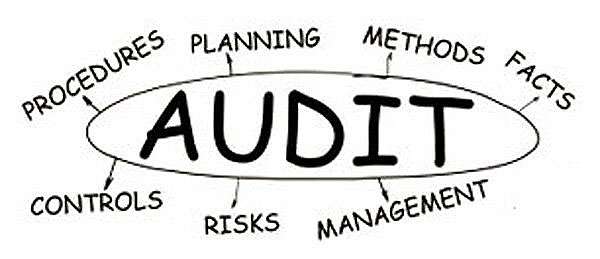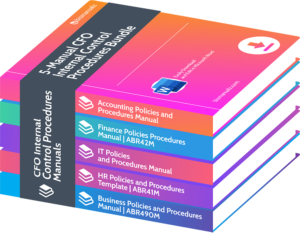What is The Purpose of Internal Control?

Internal control is and essential mechanism for businesses, providing a systematic approach to ensure progress towards organizational goals. It includes processes, policies, and procedures to protect assets, promote accurate financial reporting, and maintain efficiency and regulatory compliance. What is the purpose of internal control?
Benefits of Internal Control
To understand internal control, it is important to recognize its key components. Firstly, segregation of duties within and organization by assigning different responsibilities to different individuals is necessary to reduce errors or fraudulent activities. Secondly, regular monitoring and supervision enable management to catch any deviations from established policies or procedures.
Also, comprehensive documentation of processes and policies is essential for continuity in operations. Lastly, training programs keep employees updated on new developments and best practices.
Effective internal control minimizes risks, prevents fraud, improves decision-making, and keeps stakeholders happy. It is the backbone of a business’s governance structure, enabling it to handle challenges while being accountable and transparent.
Internal Control Superhero
Internal control is a superhero for organizations – it safeguards assets, promotes efficiency, and ensures accurate financial reporting. Here are its superpowers:
- Streamlining processes to increase efficiency.
- Identifying and preventing fraud, errors, and misstatements.
- Providing checks and balances for accurate financial info.
- Segregating duties and access controls for asset protection.
- Adhering to legal and regulatory requirements.
- Providing reliable and timely info for better decision-making.
It also brings additional benefits, like fostering a culture of accountability, transparency, employee morale, and a strong reputation. To maximize its power:
- Conduct periodic assessments.
- Provide regular training and communication.
- Segregate duties.
- Integrate tech tools.
- Document policies and procedures.
- Ensure active management oversight.
These steps will ensure that internal control brings its superpowers to your organization – operational efficiency, risk minimization, and compliance with laws and regulations.
Elements of Internal Control
Internal control is a system of processes and procedures that organizations use to protect their assets, make sure financial reports are accurate, be efficient, and follow the law and regulations. It is made up of five connected elements that support various types of internal controls.
These elements are:
- Control environment: sets the tone for the organization, stressing ethics, honesty, and responsibility.
- Risk assessment: finds and inspects possibilities of stopping the goals from happening.
- Control activities: are rules and methods used to stop the recognized risks.
- Information and communication: make sure that all the right info is noted, shared, and used by everyone in the organization.
- Monitoring: checks the quality of the internal controls and finds any weak spots that need to be fixed.
Remember to review and update financial internal control measures regularly so they are still effective against any new risks or changes. Control freaks think that internal control stops chaos and keeps their minds stable.
Objectives of Internal Control
Captain Accountability, the superhero of internal control, protects the company’s assets from unauthorized use or theft. It safeguards resources & ensures compliance with laws, regulations & internal policies.
Efficiency, effectiveness & accuracy in financial reporting are promoted by streamlining processes & assigning responsibilities clearly. Risk is minimized by identifying potential risks & implementing controls.
Transparency & ethical behavior are supported by internal control. To ensure long-term success, regular reviews & updates are needed to adapt to changing business environments.
Role of Internal Control in Achieving Organizational Goals
Internal control procedures are vital for meeting organizational objectives. It involves policies, processes, and systems to make sure operations are efficient and accurate, financial reporting is accurate, and laws and regulations are followed.
Internal control safeguards assets and guards against fraud. It looks for risks and takes steps to reduce them, so that resources are used effectively and productivity is maximized. Also, internal control holds people accountable and keeps everyone on the same page with regards to procedures.
In addition, internal control helps organizations assess their performance. The monitoring systems in place provide management with timely information about progress. This way, deviations from goals can be noted quickly and corrective actions taken.
To strengthen internal control, do the following:
- Break up critical tasks among different people – segregation of duties – to reduce the chance of fraud or errors going undetected.
- Carry out internal audits regularly to spot weaknesses in controls and suggest improvements.
- Utilize IT systems and data analytics to prevent manual errors and locate patterns that may otherwise go unnoticed.
By doing this, organizations will have a strong internal control system in place that aids in attaining goals effectively. It builds trust among stakeholders and improves organizational performance.
Importance of Internal Control in Different Industries
Internal control is essential in today’s dynamic business landscape. From finance to healthcare, law enforcement to manufacturing, it helps safeguard assets and ensure operational efficiency.
It comprises processes, policies, and procedures to reduce risks and comply with regulations. Robust internal control measures can manage financial reporting risks, fraud, data security, and operational inefficiencies.
Internal control also fosters accountability and transparency. It sets up a system for monitoring operations, spotting threats, and taking corrective action. This strengthens governance and risk management, resulting in improved performance.
Take a leading pharmaceutical company, for instance. With tight regulations, this industry is prone to quality and counterfeit issues. By implementing strong internal control systems – such as regular quality checks, documentation maintenance, and a secure supply chain – they protect public health and their brand reputation and trust.
Challenges and Limitations of Internal Control
The challenges and limitations of internal control can seem daunting. But, understanding them is essential to manage risks and improve operations. Let’s explore the common challenges and potential strategies to overcome them.
Here is the table:
| Challenge | Description |
|---|---|
| Insufficient resources | Limited budget or lack of skilled personnel can hinder robust controls. |
| Complexity of operations | As organizations grow, processes become more intricate, making controls harder to manage. |
| Resistance to change | Employees may resist new controls due to fear of change or job insecurities. |
| Lack of top management support | Without senior leadership support, implementing controls becomes challenging. |
| Inadequate risk assessment | Failure to assess risks accurately can lead to ineffective control design/execution. |
These challenges can be faced by:
- Allocating sufficient resources.
- Simplifying complex operations.
- Promoting change management.
- Gaining top management support.
- Enhancing risk assessment procedures.
Organizations can strengthen their internal control systems and mitigate potential risks more effectively. It’s like putting up and invisible force field.
Best Practices for Effective Internal Control Implementation
It is essential to implement a risk assessment framework to recognize and assess possible risks to the organization’s objectives. Define clear and precise control objectives that are in line with the organization’s strategic goals. Establish and internal controls system that includes appropriate segregation of duties, routine monitoring and ongoing assessment of control activities.
Provide thorough education to workers about their roles and duties inside the internal control system. Do periodic reviews and audits to make sure the efficiency of the internal control implementation.
Furthermore, it is important to frequently communicate and emphasize the value of internal controls across the organization. This develops a culture of conformity and responsibility, bringing about enhanced overall operational performance and risk mitigation.
The Institute of Internal Auditors reveals that effective internal control implementation is essential for organizations to safeguard assets, reduce mistakes and fraud, and ensure regulatory compliance with industry standards.
Purpose of Internal Control
Internal control is key for and organization to work well. It allows companies to handle risks, secure their assets, and keep track of financial information. Implementing proper internal controls can minimize the chance of fraud, errors, and irregularities.
Having a good system of internal control involves policies and procedures that boost responsibility, openness, and compliance with laws. It helps a business spot and deal with risks. This includes having distinct tasks, approval/authorization systems, regular supervision, and reliable records/reports.
It is not only good to stop fraudulent activities, but it also makes operations smoother and holds personnel responsible. This assists management in assessing the company’s performance, making informed decisions, and using resources wisely.
Deloitte’s publication from 2014, “Understanding Internal Control Over Financial Reporting,” explains why it is important to have effective internal controls to have precise financial records without any material misstatement.
Frequently Asked Questions

Q: What is the purpose of internal control?
A: The purpose of internal control is to ensure that a company’s operations are conducted in and efficient and effective manner, and to safeguard assets, prevent fraud, and ensure the accuracy of financial information.
Q: How does internal control contribute to the success of a business?
A: Internal control plays a critical role in the success of a business by providing a framework that helps management achieve its objectives, identify risks, and implement measures to mitigate those risks. This ultimately leads to improved financial performance and overall business stability.
Q: What are the key components of internal control?
A: The key components of internal control include control environment, risk assessment, control activities, information and communication, and monitoring activities. These components work together to establish and effective system of internal control within and organization.
Q: How does internal control protect against fraud?
A: Internal control helps protect against fraud by implementing procedures that deter and detect fraudulent activities. This includes segregation of duties, regular monitoring and auditing, and the establishment of a strong ethical tone from top management.
Q: Why is accurate financial reporting important in internal control?
A: Accurate financial reporting is crucial in internal control because it provides stakeholders with reliable information to make informed decisions. It builds trust among investors, creditors, and other stakeholders, and ensures compliance with legal and regulatory requirements.
Q: How can a company evaluate the effectiveness of its internal control system?
A: A company can evaluate the effectiveness of its internal control system through regular monitoring and assessment processes. This can include internal audits, management reviews, and feedback from employees. Additionally, external audits by independent auditors can provide and objective evaluation of the system’s effectiveness.
















Leave a Reply